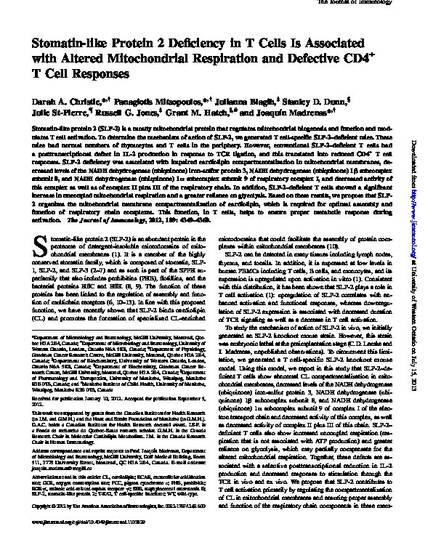
Stomatin-like protein 2 (SLP-2) is a mostly mitochondrial protein that regulates mitochondrial biogenesis and function and modulates T cell activation. To determine the mechanism of action of SLP-2, we generated T cell-specific SLP-2-deficient mice. These mice had normal numbers of thymocytes and T cells in the periphery. However, conventional SLP-2-deficient T cells had a posttranscriptional defect in IL-2 production in response to TCR ligation, and this translated into reduced CD4(+) T cell responses. SLP-2 deficiency was associated with impaired cardiolipin compartmentalization in mitochondrial membranes, decreased levels of the NADH dehydrogenase (ubiquinone) iron-sulfur protein 3, NADH dehydrogenase (ubiquinone) 1β subcomplex subunit 8, and NADH dehydrogenase (ubiquinone) 1α subcomplex subunit 9 of respiratory complex I, and decreased activity of this complex as well as of complex II plus III of the respiratory chain. In addition, SLP-2-deficient T cells showed a significant increase in uncoupled mitochondrial respiration and a greater reliance on glycolysis. Based on these results, we propose that SLP-2 organizes the mitochondrial membrane compartmentalization of cardiolipin, which is required for optimal assembly and function of respiratory chain complexes. This function, in T cells, helps to ensure proper metabolic response during activation.
Available at: http://works.bepress.com/stanley_dunn/6/
10.4049/jimmunol.1103829